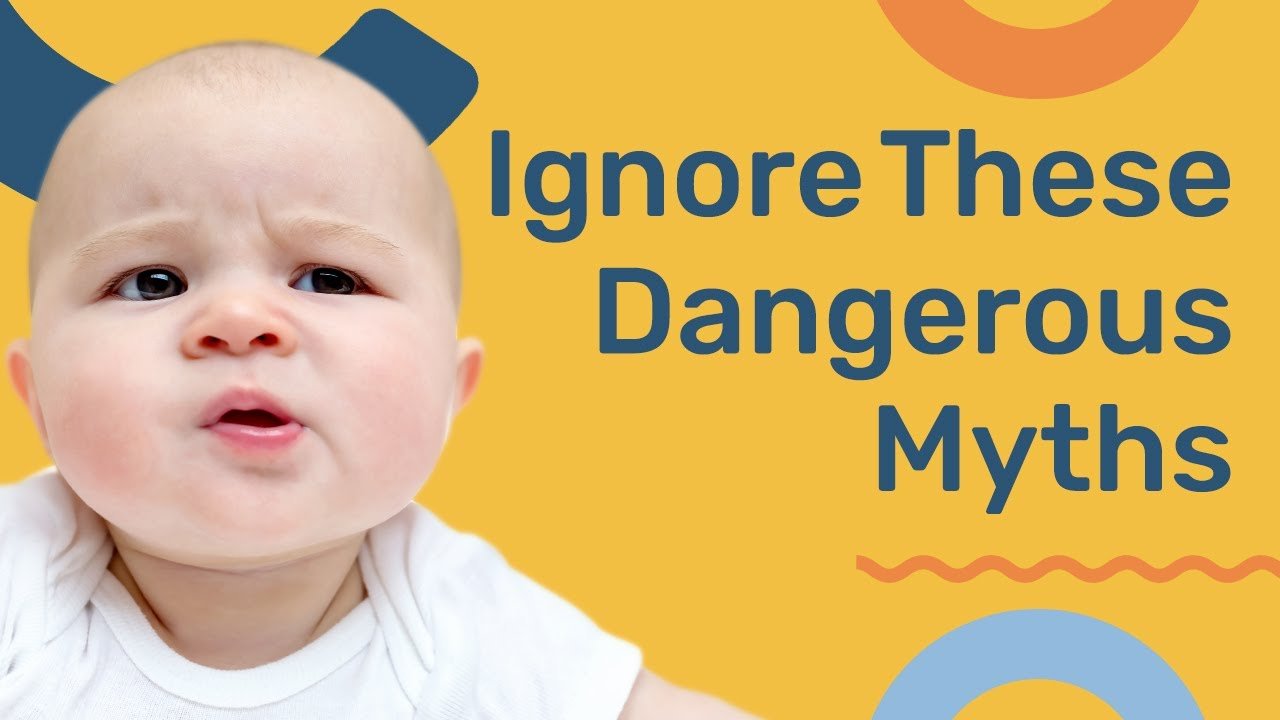In the video, “Debunking 9 Baby Development Myths: Fact or Fiction?” by Emma Hubbard, you’ll discover the truth behind some of the most common and bizarre myths about baby development. Emma addresses important topics such as teething, dribbling, newborn vision, sleep patterns, secure attachment, hearing abilities, and even the infamous first smile. With her friendly and informative approach, Emma aims to help parents understand what is fact and what is fiction when it comes to their baby’s development. She also provides a free PDF document with parenting tips and tricks to further support parents on their journey. So sit back, relax, and get ready to learn, laugh, and gain valuable insights into your baby’s development.
In this captivating video, Emma Hubbard discusses the most prevalent myths surrounding baby development, debunking them with facts and expert knowledge. She covers various topics such as teething, dribbling, vision, sleep patterns, secure attachment, hearing abilities, first smiles, bowel movements, and the safety of baby walkers. Emma’s aim is to provide parents with accurate information so they can better understand their little one’s growth and development. She also encourages viewers to download a free PDF document that contains helpful parenting tips and tricks. With Emma’s friendly and approachable demeanor, you’re sure to enjoy the video while gaining valuable insights into your baby’s development.

Myth: Teething causes fevers
Teething is a natural process that occurs as babies’ teeth start to emerge through their gums. Many parents believe that teething can cause fevers in babies, but this is actually a myth. While some babies may experience a slight increase in body temperature, a true fever is not caused by teething. A fever is generally defined as a body temperature above 100.4 degrees Fahrenheit or 38 degrees Celsius. If your baby has a fever while teething, it is more likely that they are fighting an illness or have an infection that requires treatment. It’s important to consult a healthcare professional if your baby has a fever to determine the underlying cause and appropriate treatment.
Myth: Dribbling at 8 to 12 weeks of age means teething
Another common myth is that when babies start dribbling at 8 to 12 weeks of age, it means they are teething. However, this is not accurate. The increased dribbling at this age is actually due to increased saliva production in babies. Babies at this age haven’t yet learned how to swallow their saliva effectively, so it may come out as dribble. This does not necessarily indicate that they are teething. The production of saliva may also increase when babies start to mouth their hands and toys at around three to six months of age. It’s important for parents to understand that increased dribbling does not always mean teething and that teething is a separate process that occurs when babies’ teeth start to emerge through the gums.
Myth: Newborns cannot see up close
Contrary to popular belief, newborns are capable of seeing up close. While their vision at a distance is not as developed, newborns can see objects and people who are within 20 to 38 centimeters of them. They particularly enjoy looking at human faces and high contrast toys. Newborns’ ability to see up close is an important aspect of their early development and interaction with their parents. However, their vision at a distance improves around four months of age, allowing them to see across the room. Parents should engage with their newborns by holding them close, making eye contact, and using high contrast toys to stimulate their visual development.
Myth: Babies should sleep through the night at three months
One of the most common myths that parents often encounter is the belief that babies should sleep through the night at three months of age. While it would be ideal for babies to sleep through the night at this age, it is not a realistic expectation for all babies. Every baby is different, and their sleep patterns and needs vary. Some babies may indeed sleep for longer stretches at three months, while others may still wake up for feeds during the night. It is perfectly normal for babies to wake up for feeds during the first few months of life as their stomachs are small and they require frequent nourishment. Parents should not feel discouraged or worried if their baby is not yet sleeping through the night at three months. With time and proper sleep routines, most babies eventually develop longer stretches of sleep at night.
Myth: Holding and responding to a baby’s needs spoils them
A common myth perpetuated by well-meaning family members and friends is that holding and responding to a baby’s needs will spoil them. However, the opposite is actually true. Holding and responding to a baby’s needs promotes secure attachment and emotional well-being. When parents consistently meet their baby’s needs for comfort, food, and attention, it builds a sense of trust and security in the child. Babies rely on their caregivers for survival and development, and responding promptly to their cues helps them feel safe and loved. This secure attachment formed in infancy allows children to develop independence and explore the world with confidence later in life. It’s important for parents to trust their instincts and respond to their baby’s needs rather than worrying about spoiling them.
Myth: Newborns cannot hear or recognize their parents’ voices
Contrary to popular belief, newborns are indeed capable of hearing and recognizing their parents’ voices from birth. Research has shown that babies start to listen inside the womb as early as 24 weeks gestation. After birth, newborns are able to distinguish their parents’ voices from other voices and often turn their heads in the direction of their parents’ voices. Bonding with your baby through early vocal interactions is crucial for their emotional and cognitive development. Talking, singing, and cooing to your newborn not only fosters a strong parent-child bond but also contributes to their language development. It’s never too early to start engaging with your baby through sound and developing that special connection.
Myth: Baby’s first smile is a reaction to passing wind
One of the more amusing myths about babies is that their first smile is simply a reaction to passing wind. While it may seem funny, this is not true. Between five to eight weeks of age, babies develop the ability to smile purposefully, and their first smile is a truly special and glorious interaction. When your baby looks directly at you and smiles, it is a meaningful social interaction that demonstrates their growing awareness and connection with you. Smiling is an important developmental milestone that marks the beginning of their social communication skills. Each smile from your baby is a heartwarming moment that showcases their growing personality and budding social abilities.
Myth: Bowel movement frequency should be consistent for all babies
Another misconception related to baby development is the belief that bowel movement frequency should be the same for all babies. In reality, bowel movement frequency varies for each baby and can change over time. Some babies may have multiple bowel movements in a day, while others may only go once every few days. This wide range of normal is influenced by factors such as diet, age, and individual differences. As babies grow older, the frequency of bowel movements may decrease, and this is considered normal. However, it is essential for parents to monitor their baby’s bowel movements for any changes in consistency, volume, or the presence of blood. If there are significant changes or concerns, it is advisable to consult a healthcare professional for a proper evaluation and guidance.
Myth: Baby walkers are safe and aid in development
Baby walkers have been a popular item for many years, with the belief that they help babies learn to walk and aid in their development. However, this is a dangerous myth. In reality, baby walkers are not safe and can lead to serious injuries. The use of baby walkers has been associated with a higher risk of falls, head injuries, and accidents, including burns and drowning. Babies in walkers can move at high speeds and access hazards that would otherwise be out of their reach. Due to these safety risks and the negative impact on development, various countries, including Canada, have banned the sale of baby walkers. It is important for parents to prioritize their child’s safety and find alternative ways to support their development, such as supervised floor play, tummy time, and encouraging independent mobility without the use of walkers.
Conclusion
Understanding and debunking baby development myths is crucial for parents in providing accurate care and well-being for their babies. These myths often stem from outdated beliefs or misconceptions and can lead to unnecessary worry or incorrect practices. By recognizing that teething does not cause fevers, that dribbling at 8 to 12 weeks is due to increased saliva production, and that newborns can indeed see and hear their parents, parents can have a more comprehensive understanding of their baby’s development. It is important to remember that every baby is unique, and their developmental milestones and sleep patterns may vary. Holding and responding to a baby’s needs promotes secure attachment and emotional well-being without spoiling them. By recognizing the importance of early interactions and bonding through sound, parents can foster healthy development. Understanding the true nature of a baby’s first smile, the variability of bowel movement frequency, and the dangers of baby walkers ensures that parents can make informed decisions and prioritize their child’s safety and well-being. By seeking accurate information and guidance from healthcare professionals, parents can provide the best care and support for their baby’s development.

